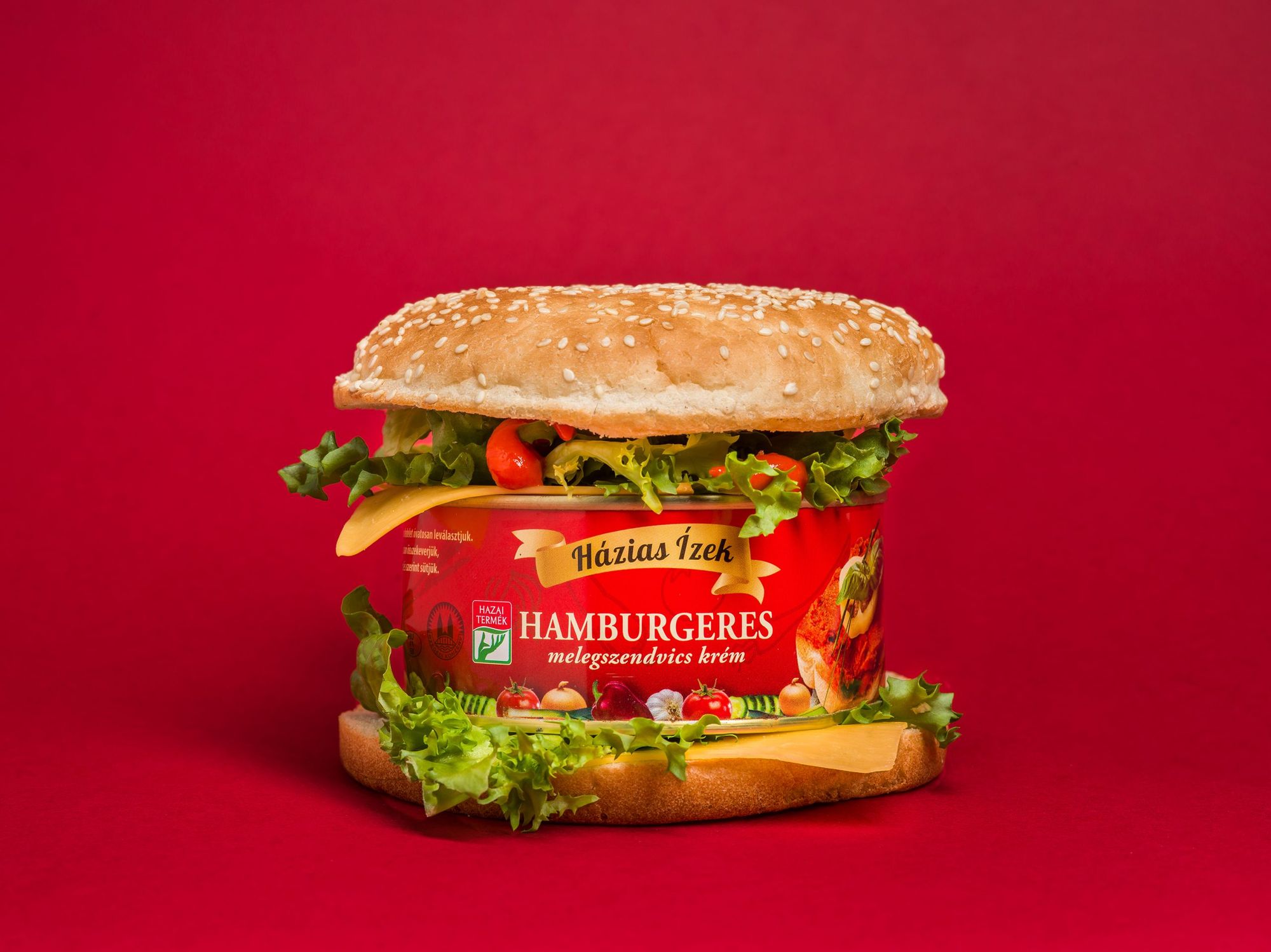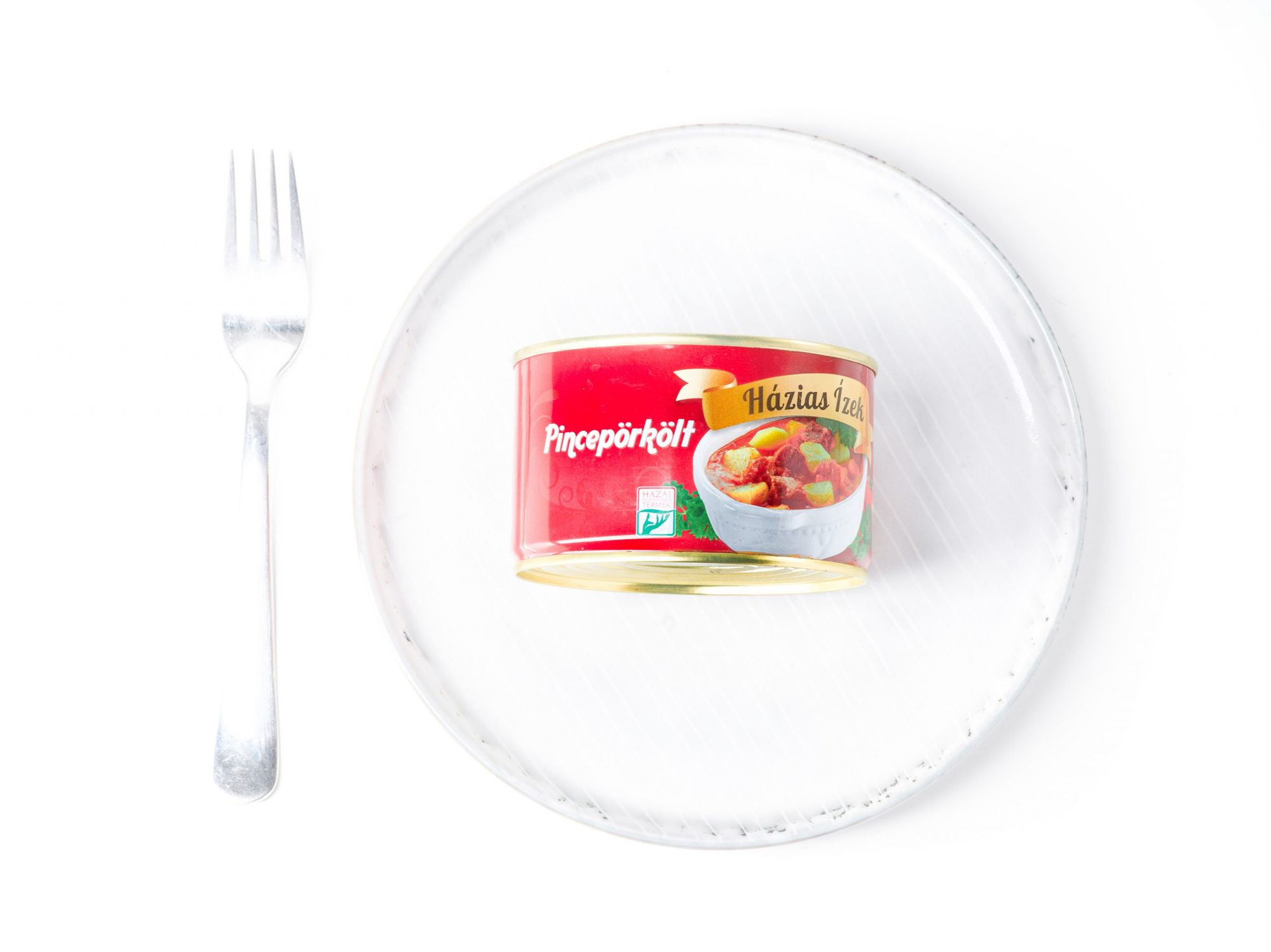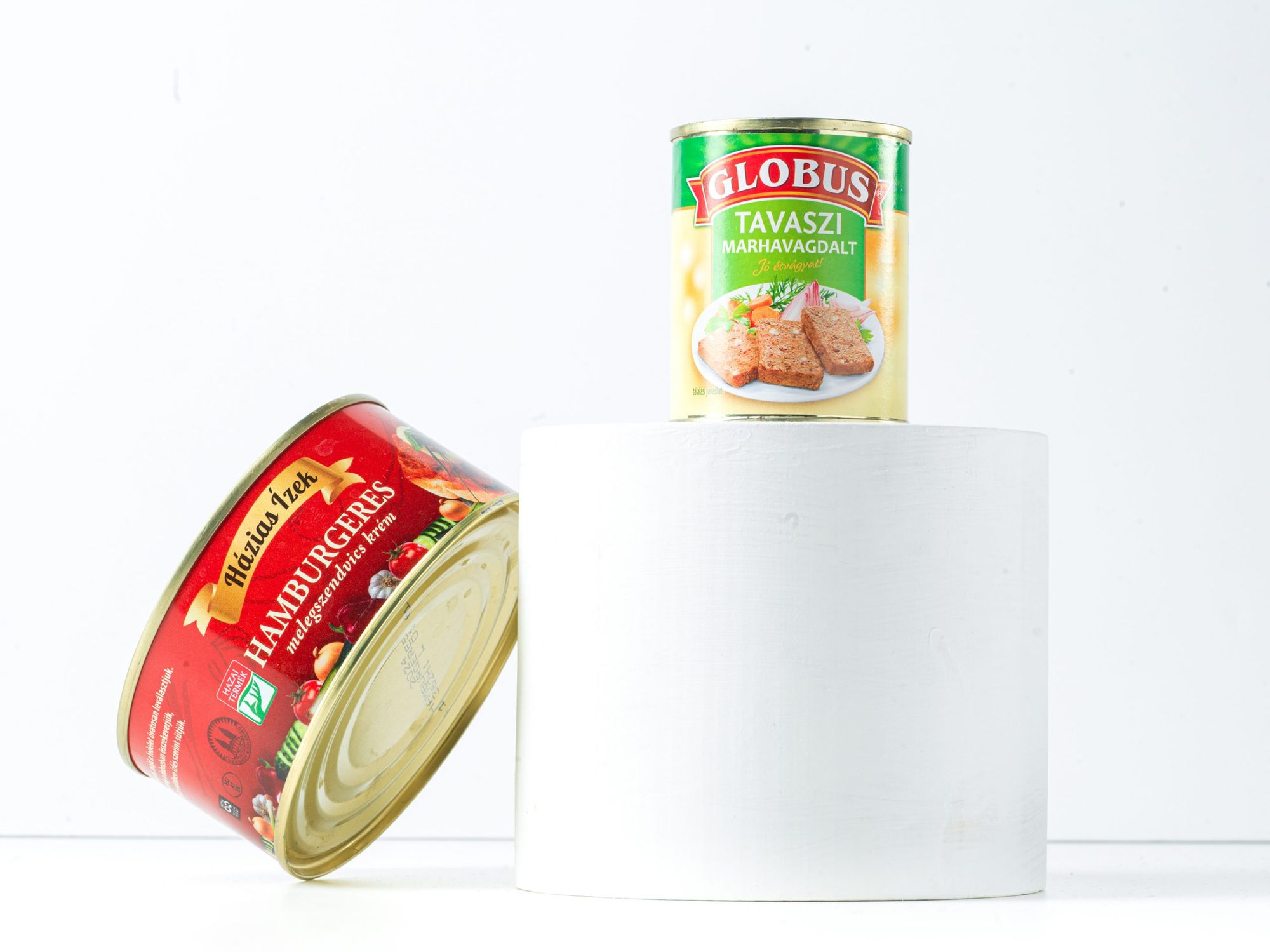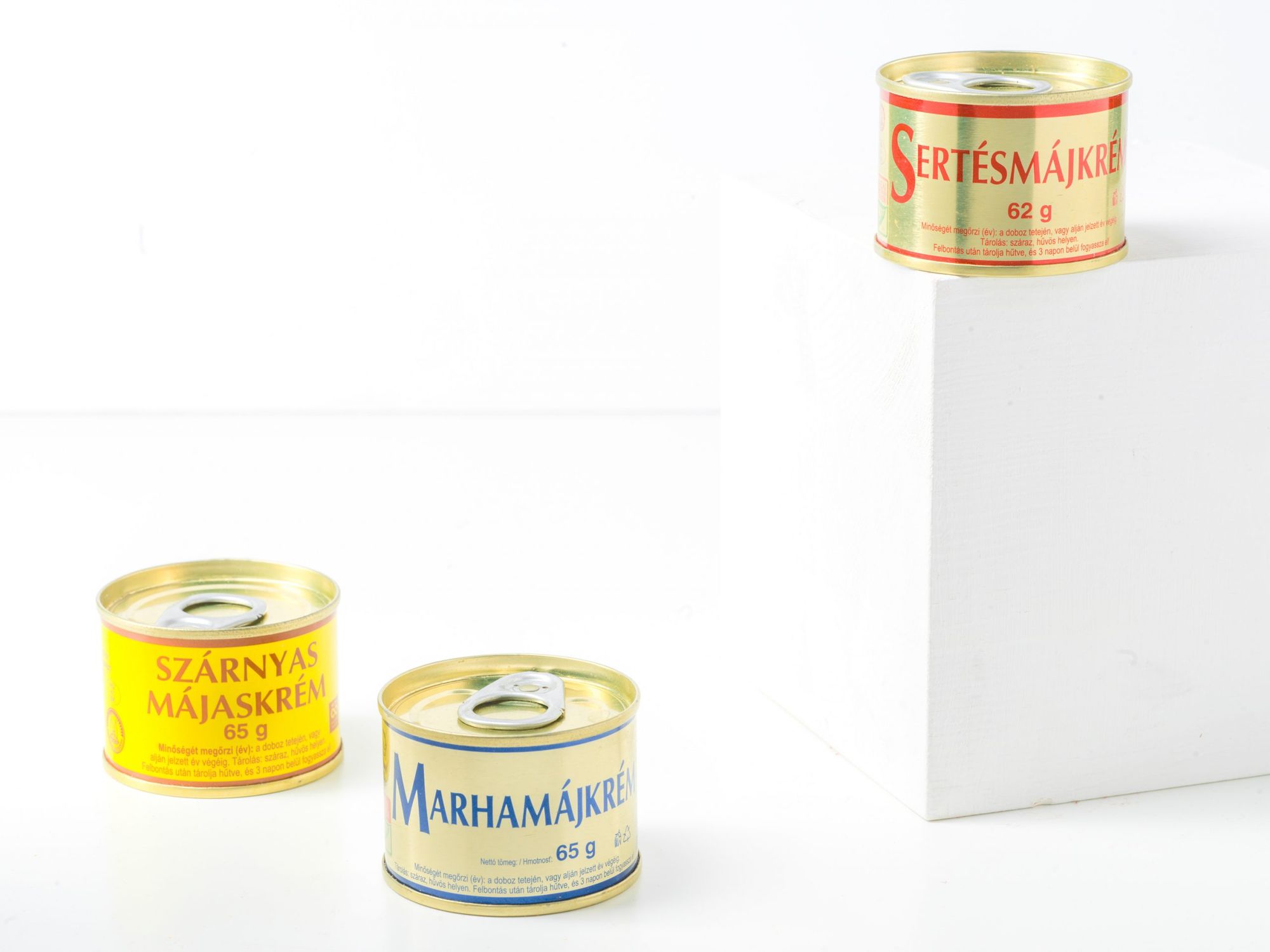Canned versions of sandwich creams and various ready meals were not only popular products of socialism—their relevance to this day is unquestionable. Not only did they provide a solution in times of need, such as war or poverty, but they became retro favorites that could not be missed for a single snack. Take a trip with us in the new chapter of the Büfé series!
There are few pantry shelves in the world that do not contain any cans. Tinned food has been a reliable source of nutrients for over two hundred years—in addition to their expiration date lasting much longer, they are easy to transport and store, resistant to environmental impacts, compact, yet versatile. Although canning and other food preservation processes have long been an integral part of the world’s cuisines (even preserving with honey or food drying—the Ed.), canned food produced under industrial conditions is safer, so it’s no surprise that its birth is linked to warfare.

The French Nicolas Appert realized at the beginning of the nineteenth century that cooking food in a glass bottle and then sealing it immediately could prevent the rapid rotting of organic matter. The method also won the interest of Napoleon, who at this time wanted to solve the feeding of the army in a sustainable way. Appert’s technology was rethought by the British Peter Duran, using tin cans instead of glass bottles, which was more favorable for industrialization, as although the cans made in this way could not be manufactured at home, they could be produced on the assembly lines quickly and in large quantities and later fully automated. (Fun fact: in the meantime, we had to wait for a long time for the can opener—it wasn’t invented until 1855 by Robert Yeates, before, they used a hammer and chisel as the opening tool.)
In the twentieth century, large manufacturers such as Nestlé and Heinz also recognized the potential of preservation: the former filled baby food and the latter ketchup into a bottle, long before the era of plastic tubes. However, the demand of customers turned more and more towards ready-made meals, so the companies were forced to pack one-course meals in this way as well, but since the bottles were not suitable for this, the tin can came to the fore again. From the 1950s onwards, the new dish became an icon of an increasingly troubled consumer society, remembered by many in the arts, enough to think of Andy Warhol’s series of Campbell soups in 1961.
Hungary did not lag behind international trends either—Manfréd Weiss founded the First Hungarian Cannery and Ore Factory in 1882. Here, meat and coffee cans were prepared for the army, and various vegetable and fruit versions were prepared for the population. The Great Hungarian Plain was very rich in crops, so the Kecskemét Cannery was born here, but the Globus brand is also almost a hundred years old: the brand was born in 1924. Twenty years later, it was nationalized and the Heavy Industry Center took over its management, and from 1948, it operated as the Budapest National Canning Industry Company. Shortly afterwards, they also won the gold medal at the Brussels World’s Fair with the technology, and from the 1960s onwards, there were plenty of Hungarian cans beyond the borders of the country.

Bean goulash, cholent, pork trotter stew or chili beans are familiar dishes for many generations. Canned food, in addition to providing a constant supply in areas where feeding was difficult, also became very popular with the population, offering convenience food at affordable prices, quickly, even without heating. Their great advantage is that they can even be eaten on their own (which is why they were also called a “job lunch”), and they are also filling, as they contain legumes, meat and some cereal crops or vegetables with a high starch content. In addition to garden herbs, the salt-pepper-paprika trio dominates, so they present familiar flavors—you don’t have to think, you just consume them.
A little more creativity was allowed by various pâtés. Pork liver pâté (then its poultry and beef version) was a popular snack with sweet white paprika and crispy, fresh white bread—the gold-red tin can still immediately catch the eye on store shelves, making it a kind of pop culture icon (for example, graphic designer Kristóf Murányi was also inspired). Forcemeat was also popular, such as Tavaszi vagdalt (Spring forcemeat), which was often placed in the sandwich not even as a cream but as full pieces. It is by the way related to luncheon meat—American spam (the origin of the word is “spiced ham”) was born during the Great Depression as a kind of meat substitute made from ribs, salt, sugar, water and starch, and during the world wars, it spread all over the world, so much so that it merged with traditional recipes. (Some examples are shown in this video.)

At the end of the twentieth century, it didn’t take much for new foods to enter the canned market, so a variety of toasted sandwich creams were born in as many variations as possible, such as with hamburger or pizza taste. The popularity of canned fish can be dated later, as it was the pickled and salted herring that remained with us from the Soviet times instead. Not so in the region: in Poland, a dish called paprykarz szczeciński was basically unavoidable—this canned food consisting of minced fish, rice, tomatoes, spices and oil appeared in the 1960s, and its predecessor was based on the fishing industry at the coast of Africa, leftover fish and a West African dish called chop-chop.
Either way, the cans seem to stay with us for a long time, and although we can make similar dishes at home in much better quality and flavors, it’s good to take the little tin cans in our hands sometimes with pleasant nostalgia.
Photos: László Sebestyén
Source: Hír.ma, Nosalty, Tó-retró, Time és Wikipédia.

Autonomous weed killer robot

A font family inspired by the Bulgarian alphabet










